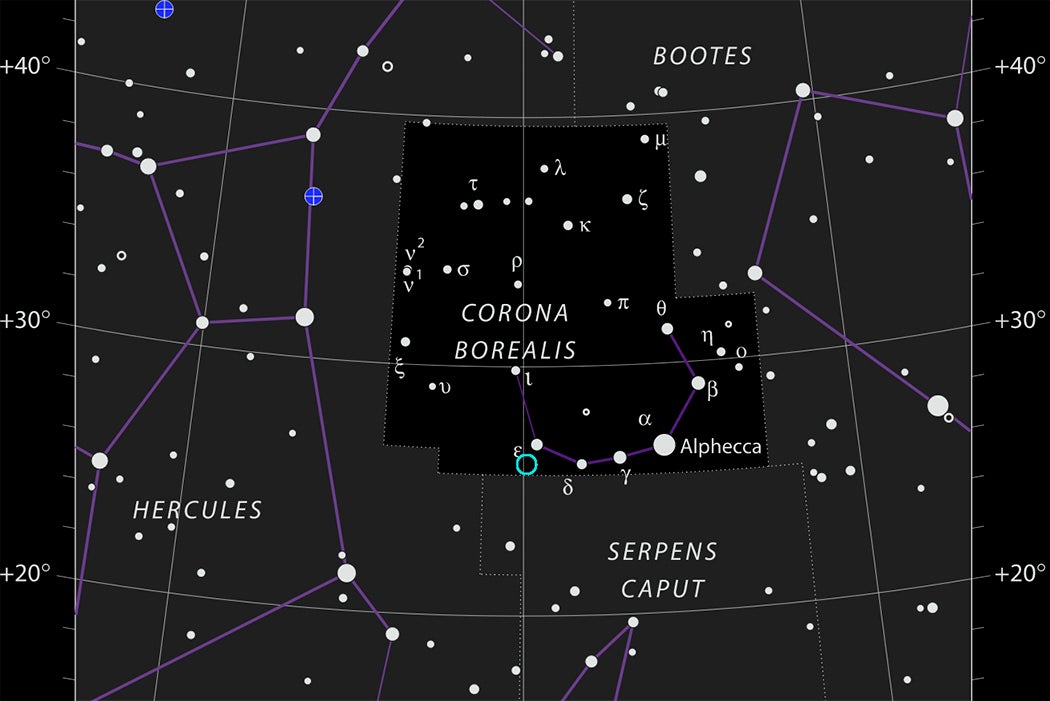On a night in 1866, John Birmingham looked up at the sky and noticed something peculiar. The constellation Corona Borealis had a new star. He had discovered the recurrent nova T Coronae Borealis, sometimes called the “Blaze Star,” which is reappearing in our skies this September.
Birmingham described the moment in a letter a couple of months later.
“On my way home from a friend’s house, on the night of May 12, I was struck with the appearance of a new star in Corona Borealis…,” he wrote. “Its colour appeared to me nearly white, with a bluish tinge; and, during the two hours that I continued to observe it, I detected no change in its light or in its magnitude.”
Historian Paul Mohr includes this excerpt in his biography of Birmingham, an Irish landowner from Tuam and a polymath who may have been one of the last astronomers of his kind.
Birmingham wrote a letter to the London Times announcing the discovery, but it was never published. Mohr cites an “irate Tuam Herald correspondent” speculating that this was because Birmingham was Irish. Birmingham had also recently published “Anglicania,” a poetical work that included strong critiques of the English government.
This didn’t deter the Irishman, who reached out to English astronomer William Huggins at the Royal Astronomical Society. Huggins recognized Birmingham’s priority and began studying the star. It sparked a passion in Birmingham, who purchased a telescope and began corresponding with scientists around Europe. He completed an intensive catalog of red stars, and in 1883, the Royal Irish Academy awarded him the Cunningham Gold Medal for his work.
This may have been one of the last times that someone like Birmingham could have made such contributions. Nicholas Whyte explains that a tradition of Irish astronomy flourished only briefly in the nineteenth century. It was driven in part by the Protestant Ascendancy culture, making Birmingham an outsider among his closest peers.
Whyte argues that economic pressures in Ireland brought this era to a swift end.
“The decline at the end of the century began when the ownership of land began to be transferred from landlord to tenant,” he writes. Families like Birmingham’s no longer had the funds to throw at telescopes and assistants. Not only that, a historical window allowing productive amateur astronomy may have been closing. As astrophysics gained prominence, contributing without any specialized training became difficult, and Whyte explains that “astronomy in Ireland had never become very professionalized.”
Weekly Newsletter
Birmingham’s uncle auctioned off his possessions after his death, a testament to Whyte’s account. A telescope is all that remains of the man Mohr describes as a largely forgotten astronomer—at least here on Earth.
Birmingham has a crater on the Moon named after him. In addition to T Coronae Borealis, he discovered a star in Cygnus, which was also named after him. He died well respected by his community, and as Mohr quotes from one of Birmingham’s obituaries, “he has written his name amongst the Stars!”







